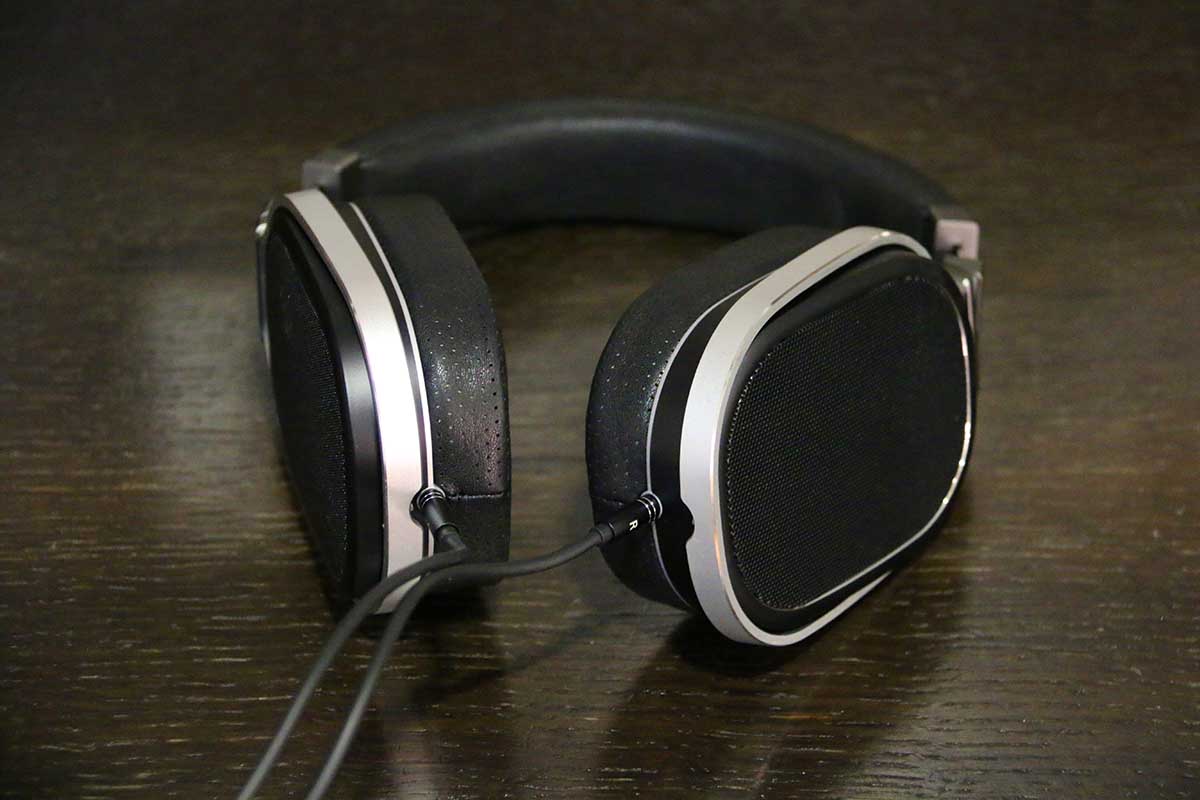
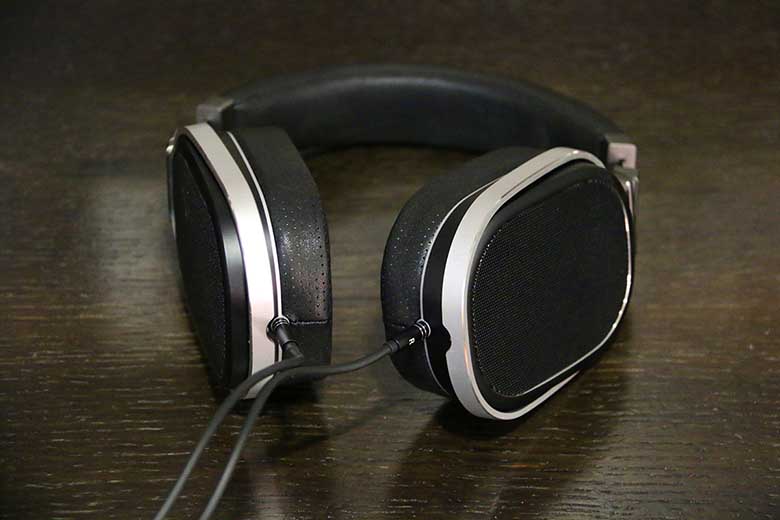
The Master Switch


The Master Switch
It’s not often that a company known for making Blu-ray players creates waves in the audio world. And it’s a little sad that no matter how big OPPO gets, they will always inevitably be introduced with those words. But while they started off in visual media, their contribution to high-end audio has been nothing short of spectacular. Whether it’s the exquisite HA-2SE portable headphone amp or the Sonica speakers, they've consistently proven that they’ve got what it takes to build good sound gear. And with the PM-2, a pair of planar magnetic headphones, they’re aiming to capture even more territory. But did they pull it off?
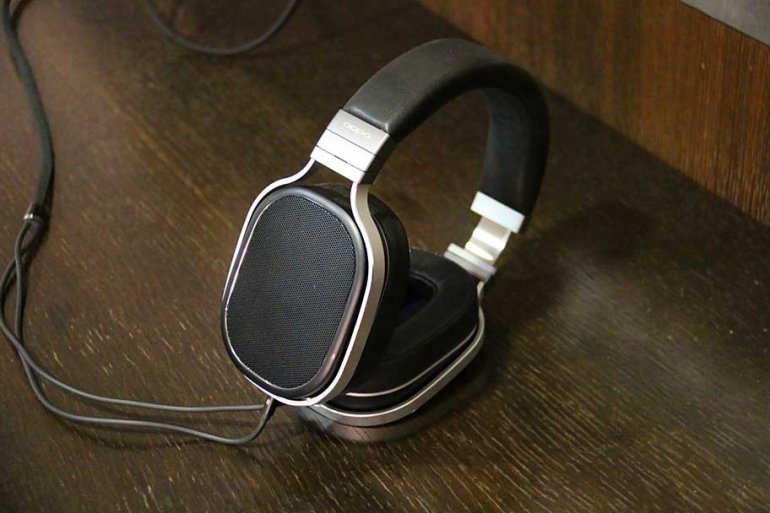
At first glance, there doesn’t appear to be anything massively special about the design of the OPPO PM-2s. This is a holdover from the previous model, the PM-1 (OPPOalso recently released a slightly cheaper version, the closed-back PM-3), which looked virtually identical to this one. It’s worth noting that the PM-1 made it into our roundup of the best high-end headphones of last year, so there’s a decent pedigree here.
Like the putative Ford, they come in exactly one colour: Black. Well, black and silver. The square, black earcups are surrounded on all sides by silver trim, and unusually for high-end cans, the actual housing for the driver units feels very slim, and is very flat. The silver trim goes up towards the headband, which turns into synthetic black leather.
If we had to give the PM-2s one big black mark (sorry), it would be the looks. They’re fine. Just fine. They are classy, simple, and straightforward, but if you were to put these in a group of similarly priced headphones, they would simply vanish. The looks get the job done, but no one is going to compliment you on your amazing headphones. Even the open-back design, of which much more anon, is very subtle. From a distance, you might even mistake these for closed-back; the grille is that fine.
In a way, they remind us of a slightly larger, more high-class version of the Bose QC35s. While that model is obviously plastic, the styling is still very similar, and neither headphone is going to win looks contest. Ultimately, this is the kind of thing that comes down to personal taste. If you’re the sort of person who is more interested in what’s inside than what’s outside – if you’d rather have BMW than a Porsche – then you’ll probably like this.
The good news is that, looks aside, the headphones are incredibly sturdy. They feel solid and robust, despite their relatively light weight (14oz), which is on the slim side for planar magnetic cans. The cups turn ninety degrees for easy portability, and left and right indicators are clearly marked. Each cup has its own jack. The headband, while not actual leather, still does a good job of feeling premium. We wouldn’t recommend throwing these around, but you can rest assured that if you do, they are unlikely to suffer any lasting damage.
The PM-2s are slightly unusual in that their earcups are rectangular, rather than ovular or circular. It’s an unusual choice, and we’ll admit that we were a little worried when we first tried them on. We needn’t have been. The fit is superb.
Although they did touch the top and back of our ears, they were never uncomfortable, even after prolonged listening sessions. The cups are not coated in leather, unlike many other high-end cans. Instead, OPPO went for latex – another unusual choice, but one which seemed to have a beneficial effect on how it felt when we sweated slightly while using these. That’s a polite way of saying that when things got hot, these didn’t feel gross.
It was also nice not to have too high a clamping pressure from the headband, which can sometimes be a problem, even in models at this price range. Instead, the PM-2s sat comfortably on the head, with just enough presence and give to let us know they were still there, without getting in the way. They aren’t quite featherweight, but we certainly didn’t expect them to feel this light, or this comfortable over long periods.
In a way, it’s almost a shame that these aren’t noise-cancelling. We could easily see ourselves wearing these on a long plane ride – they’re that comfortable. Of course, the open back design creates a fair amount of bleed (see below), and that means that they aren’t suitable for travel – although you could have course always go for the closed back, cheaper PM-3s.
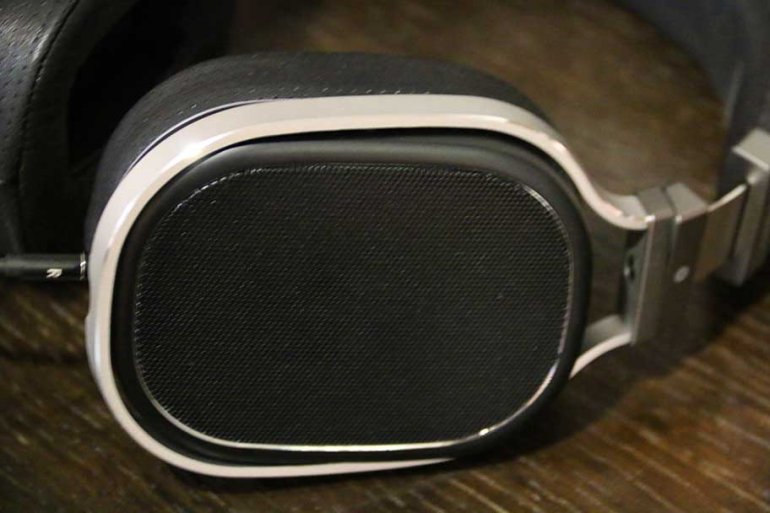
Given how sensible, even stuffy, the design is, we were quite curious to see how the sound held up. Of course, the thing about sensible is that it not only gets the job done, but gets it done really, really well. Anyway, we’ll get to that. Firstly, let’s talk about the technology inside these cans: the planar magnetic drivers.
Most headphones, certainly those at the bottom of the market, use what are known as dynamic drivers. These use a coil of thin wire to react with the magnet, creating an electromagnetic field. This helps move the actual speaker diaphragm, creating sound. It’s a simple, reliable relationship, and simply because most mass-market headphones use it doesn’t mean you should think of it as bad. We’ve tested plenty of great dynamic driver headphones, including our perennial favourite, the MEZE 99 Classics (full review here).
Magnetic planar headphones are different. Instead of dynamically moving the voice coil, electromagnetic charge is spread all the way across the speaker diaphragm, which is usually extremely thin. You need pretty large magnets to do this, and it’s a more expensive process, which is why only companies like Audeze, Hifiman and, yes, OPPO mess with it.
(There’s a third type, electrostatic headphones, but they require highly specialised equipment and are hideously expensive. A topic for another time, perhaps.)
The PM-2s offer not just one layer of diaphragm, but seven. The thinly-layered material has been highly tuned, and incorporates a spiral electromagnetic conducted design on either side of each diaphragm, which makes them more sensitive. Even if none of that means anything to you, what it translates into is some amazingly precise sound. That high-powered executive may be stuffy and sensible, but she’s still pulling down a seven-figure salary and doing an absolutely brilliant job, even if most people would never notice.
The sound is incredibly clean, almost neutral, with minimal color added to the music. Instead, what you get is delicate detail and precision, with the high notes beautifully articulated and the bass rounded and present but never overpowered. Vocals sound crisp and clear, never harsh, and even at high volumes the quality doesn’t diminish. There is minimal distortion, too, and it was fun to go back to old tracks we had listened to in a while and see what they sounded like without any coloration from the cans.
The closest comparison we could come up with was actually an old standby: our favorite pair of test headphones, the Beyerdynamic DT770 Pro (80Ω model). Those are old, and now cost much less than the PM-2s, but they have the same sound profile, in that they relay the sound in the highest detail possible, and simply get out the way.
It’s worth bearing in mind that these are open-back, and while that gives the sound a certain carefree airiness that we really enjoyed, they bleed like crazy, especially at slightly higher volumes. Using these in a crowded environment, like a busy office, or on a flight, is not a good idea.
What’s interesting is that, unlike a lot of planar magnetic headphones, these are reasonably sensitive (102dB) and have only a moderate impedance (32Ω). They were quite happy being driven from a smartphone, with only a little bit of extra volume needed to get to a decent level. Of course, plug them into a good amplifier and DAC - we used the very decent Fiio A5 (full review) and Optoma uDAC5 (full review) – and they absolutely sing. Details that were already out in front became even more clear and sharply-defined.
If we can continue our stuffy executive analogy, the suit she’s wearing might look boring at first glance, but it’s probably tailored, and probably fits her like a dream. So it is with these. Boring - but once you slide them on, amazingly effective.
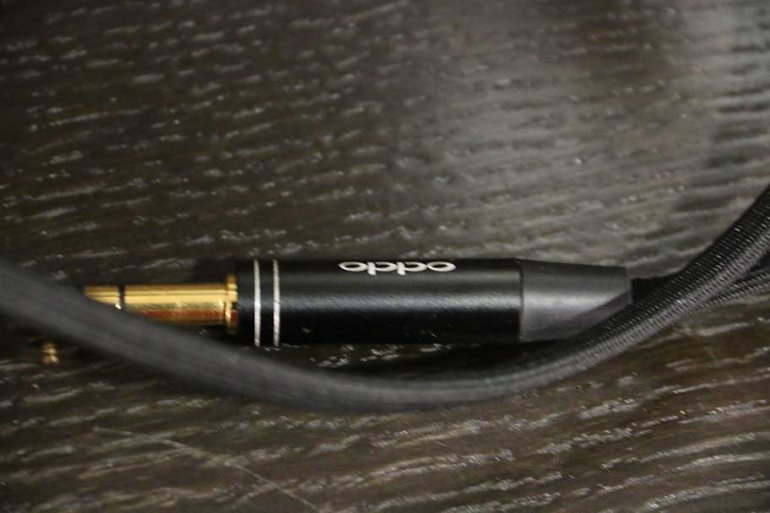
Continuing the trend of being sturdy–but–surprising, the cables this model ships with are actually kind of interesting. You get two: a three-footer and a ten-footer. The three-footer is actually the perfect length, long enough to connect to a phone or desktop amp but short enough to stay out of the way. The ten-footer, which comes with a 6.3mm plug (as opposed to the other cable’s 3.5mm), is covered in black fabric, and both looks and feels terrific. It’s exactly the kind of thing we’d expect a high-end headphone to ship with.
The zippered case is nothing to write home about. It’s made of semirigid fabric, and it’s just as boring as the design of the headphones. To be honest, we expected a little bit more, given how much these cost. Then again, the PM-1s came in a wooden box, so maybe OPPO thought that was overkill.
Like the headphone case, the packaging is simple but effective. It’s a cardboard lift-off box containing an envelope which holds the instruction manual and warranty information. Underneath it, the headphones and cables are stashed in a flimsy gauze bag.
Again: nothing too interesting here. We’ve certainly seen better headphone packaging, especially at this price range, and even below it – we still have fond memories of the gorgeous MEE Pinnacle P1s (full review) with their classy leather snap-top case.
Ultimately, all of this, combined with the dull looks, makes us think that what OPPO suffers from isn’t engineering expertise, or audio ability. It’s simply a lack of imagination. They wanted to make a pair of high-end headphones, and they did, and then they went home.
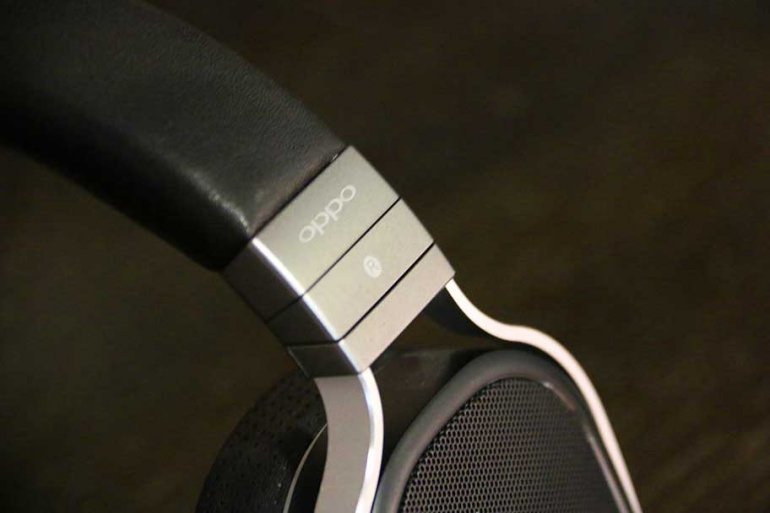
There’s no question that these are a fantastic pair of headphones, and that they deliver great sound for the money you pay. But not everyone is going to enjoy them.
See, as good as the sound is, there’s no getting away from just how boring these are. To compete in today’s crowded market, a pair of headphones needs to have something extra to help it stand out: some killer selling point or feature or type of sound that makes it stick in the memory. As it is, we loved the PM-2s for their overall devotion to quality and reliability, but we struggled to remember them after we were finished with them.
On the other hand, as we mentioned before, that may not bother you. Reliability and quiet, classy devotion to detail may be your thing. If that’s the case, then buying these will reward you with a truly sumptuous pair of headphones that will keep working for years and years and years. They’re not for us… But they might just be for you.
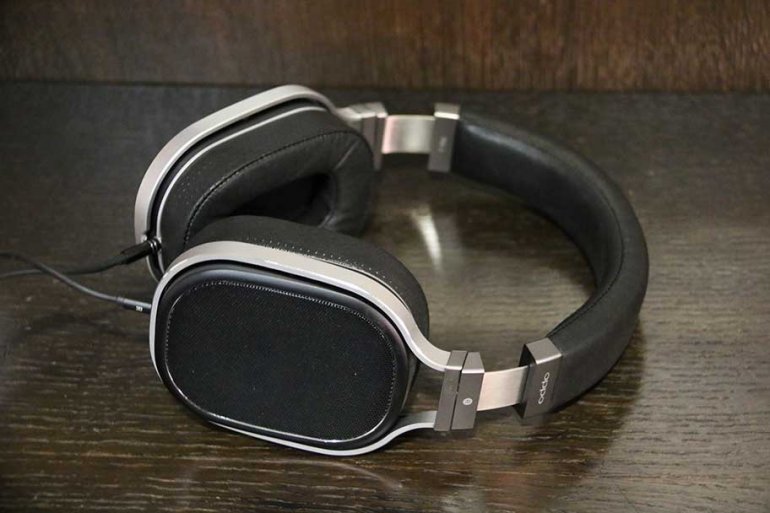
We admit: we love these. The audio quality is fantastic, especially the bass, and we still can’t believe just how well the sound responds to a wireless signal. The design isn’t going to be for everyone, but we fell in love with them, and we have a full review coming soon.
It does help that they are quite a bit cheaper than the PM-2s. If you like your sound to be a bit flashier, with a little more pizzazz, then you should take a long, hard look at these.
It’s hysterical that Audeze thinks these are portable. But they package them with a specialised iPhone Lightning cable, complete with its own DAC/Amp combo. And if you can deal with their truly enormous size, you’ll find a pair of headphones that will make you smile.
With the oversized planar magnetic drivers (100mm) we expected overpowered bass, but the audio quality is a little more like the PM-2s than we first thought. They cost roughly the same to0 – perhaps a little more expensive. Our full review is coming soon.
When we reviewed these - a pair of headphones from a quality brand with a unique gimmick, a physical, user-adjustable bass filter – we found that we couldn’t get enough of them. They’re definitely not for everyone, especially given their size, but they are a viable alternative.
“The VB wheel is a genuine revolution,” we wrote, “something we wish other manufacturers did with this much ease and grace. A sceptic might say it’s just a crude equaliser, but we say that no equaliser has pulled off a trick that sounds quite this good. Whether you’re just getting into the world of audiophile headphones, or you’re an established geek looking for something new, you need to hear these.
| Headphones | Price | Weight | Driver | Impedance | Cables | Wireless |
|---|---|---|---|---|---|---|
| OPPO PM-2 | $699 | 14oz | 85 x 69mm | 32Ω | 1 x 10', 1 x 3' | None |
| Bowers & Wilkins P7 Wireless | $400 | 11.4oz | 40mm | 22Ω | 1 x 4' | Bluetooth |
| Audeze EL-8 Titanium | $799 | 16.2oz | 100mm | 30Ω | 1 x 6'7" | None |
| Sennheiser HD630VB | $379 | 14oz | Unknown | 23Ω | 1 x 3'11" | None |